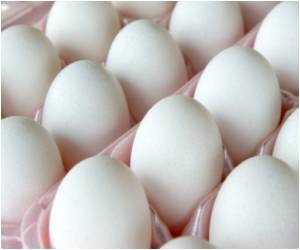
While much is known about the human infectious cycle of Salmonella, scientists have yet to understand how the bacteria escape the gut to spread infection. Epithelial cells line the outer and inner surfaces of the body, such as the skin and gut, and form a continuous protective tissue against infection. But Salmonella have learned how to live inside epithelial cells and use them for their benefit. Salmonella protect themselves within special membrane-bound compartments, called vacuoles, inside gut epithelial cells.
Using special high-resolution microscopes to view laboratory-grown human intestinal epithelial cells and laboratory mice infected with Salmonella, an NIAID research group led by Olivia Steele-Mortimer, Ph.D., in collaboration with Bruce Vallance, Ph.D., of the University of British Columbia in Vancouver, discovered a secondary population of Salmonella not confined within a vacuole, but instead moving freely inside the epithelial cells. This reservoir of Salmonella is distinct from vacuolar Salmonella. The bacteria multiply much faster; they have long tail-like projections, called flagella, used to move; and they exhibit a needle complex they use to pierce cells and inject their proteins. With these attributes, this population of Salmonella is genetically programmed to invade new cells.
The scientists observed that epithelial cells containing the hyper-replicating, invasive Salmonella are eventually pushed out of the intestinal tissue into the gut cavity, setting the Salmonella free. The mechanism used to push these Salmonella-infected cells into the body cavity resembles the natural mechanism humans use to shed dying or dead epithelial cells from their gut. The scientists believe that Salmonella have hijacked this mechanism to facilitate their own escape.
The human immune system, however, also senses that these are not normal, dying cells in the gut and triggers a response that includes release of interleukin-18, a small protein that sets off an inflammation cascade. Interleukin-18 also is prominent in chronic intestinal inflammation associated with autoimmune disorders, such as inflammatory bowel disease. The effects of interleukin-18 release provide an explanation for the acute intestinal inflammation associated with Salmonella infections.
The study has been published in the Proceedings of the National Academy of Sciences.
Advertisement













